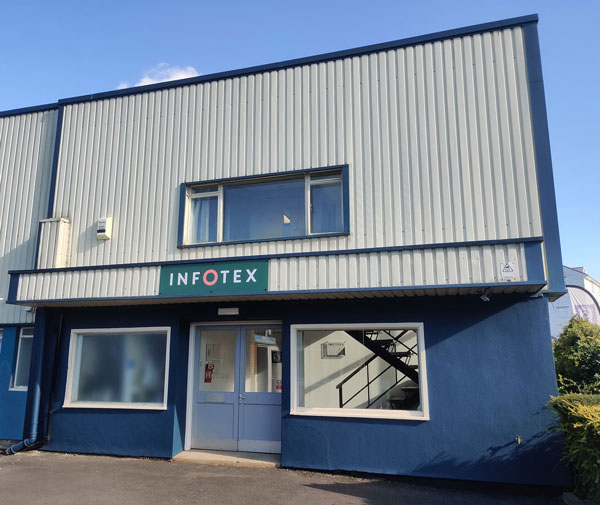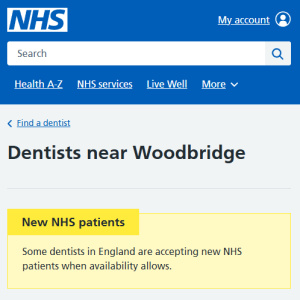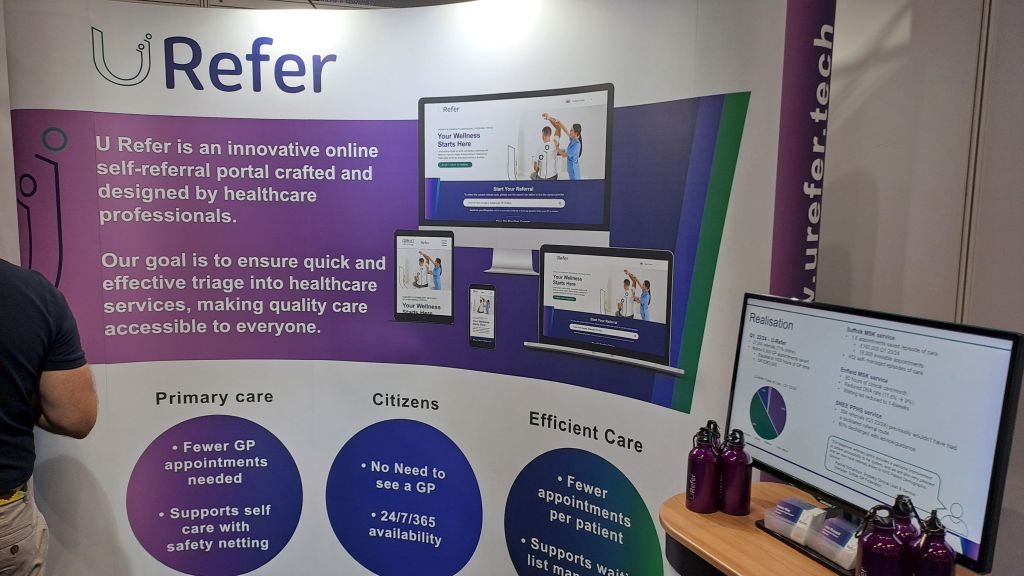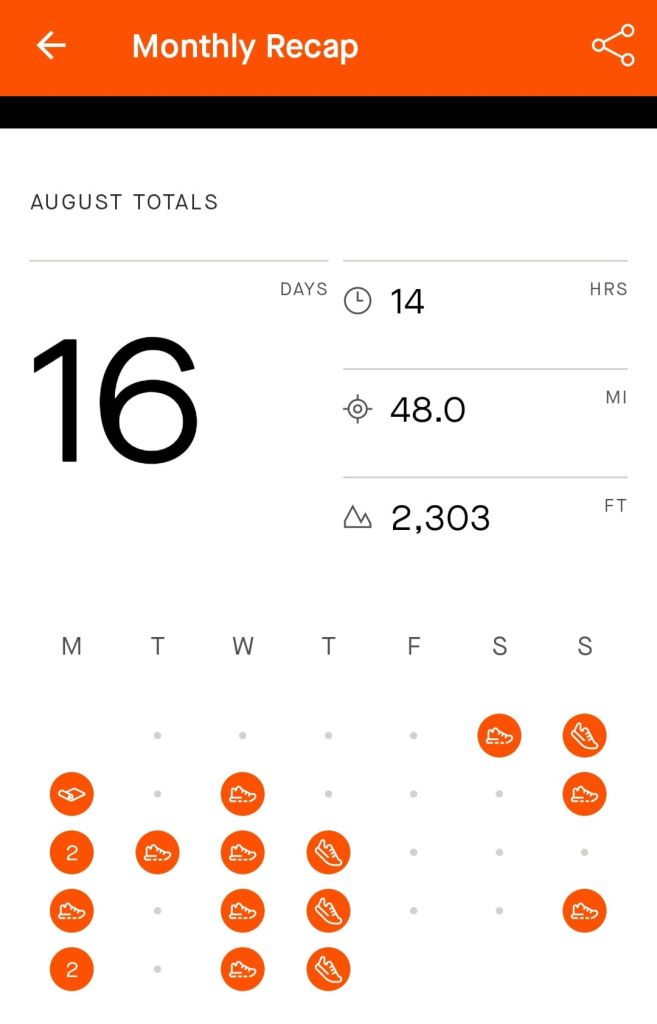
Every website needs a little love and care, is yours getting all it needs to help it truly flourish?
What does a care package mean in respect of a website? We see this as having 4 key areas:
Every business and website is unique. While the person, team, or agency that originally designed your site may have done a great job, their expertise could well be focused just on the design. However, maintaining and managing a website over time requires a different skill set – one they may not possess – making them less suited for ongoing support and care.
Just like your business evolves, so should your brand’s online presence. While a wholesale change is sometimes needed, more often than not small tweaks can ensure that you’re reflecting the values and practices of your wider business. These naturally evolve over time along with the markets they serve, just as you get a painter to give your buildings a touch-up periodically, your website should do the same.
The latest generation of automated tools can allow you to analyse the content on your website and ensure that it is on-brand and current in ways that a few years ago would not be cost-effective. Don’t just rely on tooling however, as branding can be intensely personal which is where a skilled and experienced design and copywriting team can help out.
If you are currently managing your site yourself, are you confident that you’re on top of the latest security updates needed for your site? When applying those updates, how do you check that you’ve not broken other vital parts of the site?
The time between a security issue being identified and attackers taking advantage of it is reducing. You need to ensure that relevant patches are being applied in a timely manner.
Security is a big picture and so much more than just applying patches. It has to be holistic, taking in every part of the ecosystem from password choices to server configuration and filtering out malicious requests. There are so many ways that someone, or an automated bot, can attack your website and the Internet will take advantage of any weakness you leave.
Navigating the world of online compliance can feel like a whole new language! Do you even know if your site complies with privacy requirements such as GDPR & PECR (Privacy & Electronic Communications Regulations) or accessibility rules such as WCAG (Web Content Accessibility Guidelines). We speak this language fluently and can provide actionable insights in plain English.

Using marketing platforms? You might need to implement and maintain compliance with systems like Microsoft UET (Universal Event Tracking) or Google’s CMP (Consent Management Platform), which are constantly being updated. Staying compliant with marketing platform requirements, like these is essential for data collection, ad performance, and avoiding legal penalties. Continuous monitoring of policy and technical updates is necessary in addition to constantly evolving your choice of where to place your ads and the audiences to target.
Is your website lightning-fast, especially on mobile? The average load time for a website on a phone is around 9 seconds compared to the 2 seconds average on desktop. There are a number of techniques that can be used to optimise performance for all platforms.
Caching and CDNs (Content Delivery Networks) ensure that the load time is consistently fast for your growing global audience.
Beyond speed, using metrics such as Google’s Core Web Vitals can help to benchmark your visitors’ experience, this is doubly important as these are also used by Google to help rank sites.
Think about making your website do more. On mobile a website can increasingly act as a fully functioning application. Have you considered whether you could use this to help streamline your customer support needs for example?
We’ve been in this business for over 25 years and we pride ourselves on providing long-term stable relationships with our clients. Perhaps the greatest testament to this is the volume of clients who have been with us for 10 years or more. Our continued success is based purely on our client’s success.
Building a new website is an expensive and sometimes risky process. We work with you to identify what’s working and what’s not, ensuring you get the most value from your initial investment.
We are all about creating an effective partnership with our clients and, to this end, every agreement has an ongoing care package. That may be as simple as providing the routine security patches for your content management system, or a more comprehensive package including marketing and development retainers. This principle is true regardless of your chosen technical platform.
We’re also the secret weapon for some of the smartest design and marketing agencies! Some amazing designers and marketeers understand that their focus should be on creating a great, high performing, site. They need a safe pair of hands to whom they can entrust the ongoing work, someone to keep their client happy once the site is live. This allows them to focus on their next design or marketing project.
We can work silently in the background or connect directly with the end client. If required, our experienced designers can add that extra polish to make even the most effective websites truly shine.
Well that all depends but it all begins with a conversation. Let’s discuss your goals and we’ll follow up with an audit to identify the areas needing most attention. Together we’ll create a plan to evolve your website and ensure it continues to be a valuable asset for your business going forward.
Gen Z (born 1997-2012) are known as the first true digital natives who have grown up with the internet, having easy access to social media, portable digital devices, smartphones, tablets as part of everyday life. They are tech savvy and highly adept with online digital tools and platforms whose preferred way to communicate is via online messaging through social media, gaming platforms and smartphone apps.
Generation Z has distinct digital behaviours compared to millennials, Gen X and boomers. Due to growing up in a digital online world they have had instant access to information to meet their particular needs preferring short form video engaging interactive content which is easier to digest rather than long form text.
Millenials grew up in the time period of making the transition from analogue to digital devices. Gen Z prefer mobile to desktop having had access to smartphones and portable devices.

There is a trend of Gen Z moving away from Google to using social media for searching for information and discovering new brands.
In a recent study when asked where they most frequently discover new products, 18- to 27-year-old consumers responded with:
This data highlights the growing shift toward social media platforms for product discovery among Gen Z.
However, don’t be fooled as Google isn’t going away anytime soon. Millennials (42.45%), Gen X (41.1%), and Boomers (55.9%) still rely on a Google Search first.
As traditional search marketing and AI evolve brands need to leverage social platforms, embrace authentic marketing, and prioritize experiential content to thrive with Gen Z.
I have always felt that a lot of business software development misses a very important part: a structured and formal approach to the business rules and requirements of the developed system (the business Domain). I have always felt that there was never really a home for it, or at least I was not sure where it should go; front-end developers tend to mix it with interface concerns, database experts tend to put it in the database, and newcomers have no idea where to put it. As more requirements and features are added to the same code base over time, what we end up with is an unmanageable and confusing mess, often referred to as a big ball of mud.
This approach to software development will introduce errors because it is difficult or impossible to properly test. It degrades developer productivity because bugs are very hard to pin down even when their results can be observed, because it is not obvious where to look. Any added functionality will create an even bigger ball of mud as there is no incentive to not do so. Eventually the software solution becomes unmanageable.

Where appropriate, we follow a Domain Driven Design approach. The Domain components of the solution model the processes and requirements of the actual real-world business processes and requirements. This is done in focused and specific modules that relate to a particular business context – in this way, each module focuses on a specific aspect of the overall solution and does not try and do too much.
These models contain both properties – the current state of the model, and methods – the ability to change the model state through actions. The state of the model should not be externally editable except through these methods and should never become invalid – if an attempt is made to change the model into an invalid state (through a method) that change should fail with the reason. In this way we enforce the business rules of the application.
This works well, and I believe this is especially important for business software, as, often, the requirements will contain lots of complicated business logic, rules and invariants and perhaps state-mandated regulations like GDPR. By attempting to distil this into a single, well-defined layer of the application, it becomes easier to test, easier to maintain and much easier to reason about. Additionally, because the domain model components resist becoming invalid, it should be much more robust and more difficult to break (either intentionally or by accident).
We can then build on and out from the domain components, adding database access and external services, and expose the domain to any software systems that require its services.
There is no such thing as a free lunch – on the flip side, this highly structured software engineering takes much more discipline and consideration. It also requires belief and confidence in the process from all involved and therefore can increase the time and effort it takes to initially deliver the system.
When the Systems Team at Infotex first started developing using Microsoft .NET C#, we followed a Database-First approach. This involved building the database (tables, views, and stored procedures) first using SQL Server. Data Models were then generated in C# to map to the database tables. The database often contained most of the business logic that dictated how the application would work. However, this approach came with challenges. Any changes to the database tables would inevitably lead to breaking changes in the C# code, requiring additional time and effort to ensure synchronisation between the database and application logic.
Over time, we realised that this method had several limitations. The reliance on the database for business logic made the system less flexible and more prone to errors during updates. It also hindered collaboration within teams, as database changes were not as easily tracked or managed compared to code changes. These challenges prompted us to look for a better way to develop and manage our applications.
In recent years, the Systems Team at Infotex has transitioned to a Code-First approach. With this method, we define C# classes, which are then used to create and manage the database schema. This paradigm shift has been transformative for our development process. Code-First development supports Domain-Driven Design (DDD), which moves the core application logic away from the database structure and into the C# classes that we write. This approach ensures that the application’s core functionality is defined within the codebase, making it easier to understand, modify, and maintain.
A critical tool that facilitates Code-First development is Entity Framework. This allows us to manage database schema migrations seamlessly. For example, when we need to add a new field or modify an existing one, Entity Framework enables us to define these changes within the code and apply them to the database with minimal friction. This level of control over how code maps to database tables empowers developers and improves overall efficiency.
While Code-First development offers numerous advantages, it’s not without its challenges. For example, developers need to have a solid understanding of how Entity Framework maps C# classes to database tables. Mistakes in defining relationships or attributes in the code can lead to unexpected issues in the database schema. Additionally, teams transitioning from a Database-First approach may face a learning curve as they adapt to the new methodology.
In our 25+ year history we have moved our headquarters several times to meet the changing needs of the business. From a smaller ground floor office to a much larger two floored premises as our team and client needs grew. However, despite relocating we’ve always remained true to our roots, basing ourselves within the Woodbridge area. The town has recently been voted the happiest place to live in Britain and our loyalty and connection to the local area certainly attests to that.

Like many organisations during Covid, we closed our office and decided to be entirely remote based, giving us time to take stock and see how the post-covid world would unfold. During this time we were fortunate enough to have use of the fantastic facilities at Martley Hall and Riduna Park, enabling us to still have face to face meetings and work together in person when the need arose.
Fast forward to 2024 and we felt it was time to have our own base once again, having established a new routine and way of working we needed a smaller premises to offer hybrid working, a place to host client meetings and our company-wide gatherings.

We found this and more at our new premises on TideMill Way, less than 5 minutes walk from the train station and Woodbridge town centre. With stunning views of the River Deben, fab coffee from Suffolk Coffee Pod and relaxing walks right on our doorstep to get the creativity flowing. Our new home feels like we’re in a holiday destination rather than an average office block – arguably our best office yet!

In this article our Systems Director Gareth uses his experience working within the NHS to look at the challenges that dentist practices have in publishing availability information, as NHS capacity runs scarce.
Access to NHS dental appointments has been in the news again recently following reports of patients being scammed by false advertising on social media platforms asking them to pay to access NHS dentists which turned out to be non-existent. There have also been calls for a website to be built that can inform people whether there are any NHS dentists in their area taking on patients.
There is information about whether a dentist is taking on NHS patients on the service search section of the NHS.uk website but the site itself has a message that says “Some dentists in England are accepting new NHS patients when availability allows”. The reason for that message being displayed before the user sees any results relates to the complexity of working with NHS data and organisations. Although we talk of the NHS as if it is one large institution at the primary care level i.e. GPs, Dentists, Opticians and Pharmacists it is actually a collection of small businesses that are paid to deliver services.

According to the Kings Fund website there are around 11,000 dental practices in England all of which are private businesses and could be individuals or a collective of dentists working together. Unlike for access to GPs there is no requirement to be registered with a particular dentist in order to receive NHS treatment but since only some of those 11,000 dental practices will accept new adult NHS patients at any one time it is easy to see the value of making that information readily available to those in need of treatment some of whom may have been waiting years for a dentist to become available.
So here’s the first potential problem for anyone trying to get this information to patients, there would need to be a mechanism whereby any one of those 11,000 practices can be marked as accepting NHS patients and, at the point that they decide to stop accepting patients, they must then be unmarked so they do not continue to be inundated with requests. As those 11,000 practices are independent businesses they will all maintain their own individual systems, so there is unlikely to be any automated feed of availability to populate a website with the latest information. They may also be a very small business whose priority will be seeing and treating patients, not updating information on a website.
Before the NHS.uk site contained this information I worked in a team who built a local service locator which was able to indicate whether a dentist was taking on new NHS patients. That system relied on communication between a team of commissioners and the dental practices themselves to keep the information up to date. That was acceptable at a local level but to try and keep up with thousands of different practices would be unworkable. The NHS.uk service search relies on each practice to be able to update their own information or for a local team to update information on the dentists in their area.
Having considered some of the issues with obtaining and presenting data about availability of NHS dentistry it is clear that whilst it has some issues in terms of timeliness of the data the NHS.uk service search facility should still be considered the trusted resource for this information and any local initiatives should first consider how best to support the timely update of information on NHS.uk rather than diluting its usefulness by building something independent.
Our team has decades of experience developing systems, if you need help getting your system to work better for you, or to begin the step of digitalising your organisation then we’d love to hear from you.
In today’s digital-first landscape, having a website isn’t enough. Understanding how it performs is critical to digital success. At Infotex, we leverage Google Analytics, a powerful tool that offers key insights into web traffic, user behaviour and engagement to optimise our clients’ online presence.
Our data-driven approach allows us to assess what’s working, identify growth opportunities and continually enhance user experience for measurable impact. Here’s how Infotex uses Google Analytics to drive real results for clients across all industries.
Every Infotex project starts with a deep dive into the client’s objectives—whether they want to drive sales, increase lead generation or enhance brand engagement. Once we understand their needs, we customise Google Analytics to track the most relevant metrics. By setting up the right goals and objectives in the platform, we’re able to directly monitor the progress and effectiveness of our strategies in real-time.
Example: For an e-commerce client Infotex prioritises goals like conversion rate, checkout visits and product performance metrics, focusing on strategies that drive meaningful increases in sales.
Effective marketing is all about understanding the audience. Google Analytics allows us to learn about each client’s unique user base, from basic demographics like age and location to deeper insights into user interests and devices used. This audience data informs every aspect of our strategy, allowing us to make user-centric recommendations for content, design and functionality.
Why it Matters:
Google Analytics provides valuable insights into how visitors find each client’s website, breaking down traffic sources like organic search, social media, email, and direct visits. This enables us to assess which marketing channels are performing well and adjust strategies as needed to make the best use of resources.
Example: If data shows strong engagement from social channels, Infotex might allocate additional budget to boost social campaigns. Conversely, if organic traffic is lower than expected, we can refine our SEO strategy to increase visibility.

With Google Analytics, Infotex tracks the full user journey from entry to exit. By observing where users enter, the paths they take through the site, and where they drop off, we can identify potential areas for improvement. This information informs critical decisions on page structure, content hierarchy, and call-to-action (CTA) placement.
Key Metrics Tracked:
Conversions are often the ultimate goal for our clients, and Google Analytics makes it easy for Infotex to track these key actions. By setting up custom goals and monitoring them consistently, we gain a detailed look at user behaviour in the conversion funnel, revealing insights into what drives actions and where improvements are needed.
Examples of Goals:
For clients in retail, Infotex uses the e-commerce module within Google Analytics to drill down into sales performance, product preferences, and checkout processes. By examining each touchpoint from product views to purchases, we’re able to develop data-driven strategies that optimise the sales funnel and enhance overall performance.
E-commerce Insights Include:
Google Analytics offers a wealth of data, but we understand that clients need clarity and relevance. We create custom reports with our internal company database and Google generated reports using Raven Reports which includes SEO, social media, PPC ad campaigns, SEO reports to see your website rankings, authority, backlink profile, organic traffic, tailored to each client’s objectives. These reports provide clear visuals of key metrics, making it easier for clients to understand performance and see the impact of our work.
Data on its own is useful, but it’s the actions driven by insights that make the difference. Infotex uses the information collected from Google Analytics to provide actionable recommendations tailored to each client’s goals.
Digital marketing’s dynamic nature means continuous improvement is key. We regularly monitor performance metrics, allowing us to adapt quickly in response to changes in user behaviour, industry trends or client needs. By staying up to date, we ensure that clients receive an evolving strategy to remain competitive.
Infotex’s expert use of Google Analytics enables our clients to make the most of their online presence. Through data-driven insights, strategic adjustments, and ongoing refinement, we help businesses grow, attract more users, and increase conversions—proving the real power of data in digital marketing success.
Spreadsheet Day was created as a way of celebrating one of the most widely used computer-based tools and this year marks both the 15th occurrence of Spreadsheet Day and the 45th birthday of the spreadsheet itself. October 17th was selected because on that day in 1979 VisiCalc, the first spreadsheet program, was released for the Apple II computer.

Over the last 45 years, spreadsheets have proved their versatility and importance to both business and personal users. In today’s data-driven world spreadsheets help businesses to understand more about their operations and can be used to forecast future trends. Their ability to store formulas which can recalculate automatically means it is easy to produce complex calculations and then update values to see the impact in real time. Most spreadsheet tools now also include charts and graphs allowing us to visualise data rather than focus purely on the numbers.
The Infotex team have been discussing some of their favourite spreadsheet functionality. Built-in functions feature highly on the list with the VLOOKUP function a particular favourite. VLOOKUP allows you to search through a dataset for a value and then return another cell from the matching row. Honourable mentions go to the CONCATENATE function (or CONCAT in newer versions of Excel) allowing you to join together text either from referenced cells on the spreadsheet or text that you specify and DATEDIF which allows you to work out the number of years, months or days between two dates.

While Microsoft Excel may dominate the desktop market, with the comparatively recent dawn of cloud-based spreadsheets like Google Sheets the ability to collaborate with colleagues has grown massively with the ability to see real time updates made by collaborators from anywhere in the world. Google Sheets has some impressive functions of its own including IMPORTXML which can retrieve values from a webpage based on HTML tags.
Whilst we’re celebrating spreadsheets we also have to keep in mind times when they’ve been put to uses that maybe they weren’t originally intended for. One infamous example is during the early days of the Covid pandemic the use of an old Excel file format meant that records of test results were incomplete because the spreadsheet simply ran out of rows. More recently a “spreadsheet issue” was blamed for 6,500 votes being missed from the originally declared votes for the Putney constituency in the 2024 General Election (although the oversight didn’t change the overall winner).
Last year we looked at what to do if your spreadsheet has become unmanageable so if you find yourself with a spreadsheet that is stretching the limits of what they are capable of then do consider getting in touch to see how we can help out.
Since the inception of the Suffolk and North East Essex ICS Can Do Health & Care Expo in 2022, Infotex team members have attended as delegates but this year we had our own stand for the first time. The Expo is a great event bringing together a multitude of organisations who work together to improve the health and wellbeing of people across Suffolk and North East Essex. As a digital technology company we feel we can contribute by helping organisations improve awareness of, and access to, their services and introduce systems to streamline their processes to help them help more people.
We enjoyed the day and had some good conversations with the visitors to the Expo. We also took the time to visit some of the other stands to see and hear what other organisations are doing, it’s great to be able to find out more about what is going on in the local area.
Earlier this summer I had the opportunity to join our friends from Allied Health Professionals Suffolk CIC (AHP Suffolk) on their stand at the NHS ConfedExpo in Manchester. The expo is a two-day event where suppliers can advertise their products to an audience of NHS professionals and it also features a range of presentations about technological and process advancements within the health sector.
AHP Suffolk were there to promote their URefer self-referral platform for which the Infotex Systems team are proud to be their development partner. The URefer stand was shoulder to shoulder with stands from the likes of Adobe, BT, Google and Microsoft all of whom value the relationships they have with NHS customers and were keen to show off their range of products and services.

Over the course of the two days of the show it was interesting to see the enthusiasm for URefer amongst a variety of different organisations and over time more will be able to use the system to help patients to access the services they need easily.
As well as helping AHP Suffolk to promote URefer I also found time to browse the other stands myself, meeting up with some familiar faces from my time working in the NHS, looking at some of the new technologies companies were showcasing and listening to sessions being held in the various presentation theatres. Among those was a presentation by another Infotex Systems customer, Ian Turner OBE. Ian was there in his capacity as Co-Chair of the National Care Association to facilitate a talk entitled “Improving the health of care home residents through virtual care” based on processes being implemented in some care homes in the north of England.
All in all, it was great to see the local focus of the Can Do Health & Care Expo in person having also experienced the national level at the NHS ConfedExpo.

Black Friday is seen by many retailers as one of the biggest selling opportunities of the year. But is a Black Friday sale the right option for your business?
Since it was introduced to the UK by Amazon in 2010, Black Friday has become a much anticipated four-day long retail event, which sees retailers release big offers and discounts to mark the beginning of the Christmas shopping season. This year’s Black Friday falls on November 24th and is likely to be one of the largest ever, particularly for online sales.
But Black Friday is also associated with fuelling hyper-consumerism, irresponsible production and damaging smaller businesses who cannot compete with the discounts on offer from bigger retailers. The notoriety of the sales mean it is not uncommon to see false discounting, and even entire fake stores designed to catch the unsuspecting consumer.
Because of this, some big brands are choosing to opt out of Black Friday altogether, and 85% of independent retailers also boycott the event.
The brands doing Black Friday differently
For a number of years some socially and environmentally conscious brands have been boycotting Black Friday.
IKEA boycotted Black Friday sales last year, saying that they don’t do large sales because they strive to have the most affordable prices possible all year round. In the place of Black Friday, they are favouring their Green Friday initiative, which enables customers to get 50% off new items when returning an old item to the store through the Buyback & Resell scheme.
Patagonia, for example, does not participate in Black Friday in the usual way, instead committing to repairing clothes, buying used, and buying quality to improve sustainability and help tackle the climate crisis. For Black Friday 2011, the brand ran an ad in The New York Times highlighting overconsumption, and in 2016 donated 100% of Black Friday sales to grassroots organizations.
Skincare brand Deciem have opted to close down their website and store for 24 hours each Black Friday. Instead, they have a month-long sale as part of their ‘Slowvember’ campaign, to encourage consumers to take time to consider whether the product is necessary and the right product for them, instead of impulse buying, which can lead to waste.
Despite their hugely popular Boxing Day sale, Next has opted out of Black Friday since 2020. While they’ve never divulged the reason, the general thinking is that it is a push towards sustainability.
Boycotting Black Friday can actually help your business, communicating that you have confidence in the value of your product at full price and, in doing so, building trust with your customers.
However, Black Friday also has many positives: most importantly, sales are a valuable opportunity for consumers to purchase necessary items that are too expensive at full price.
Our advice is do what suits your business best. If you are going to participate in the nation-wide discount extravaganza, consider your offer and why you’re doing it, keeping your customer experience and business values in mind. Make sure you keep in touch with the wider team, including delivery companies, website hosting etc to make sure they’re geared up as well to support your promotion.
In what’s become an annual tradition, we have a team taking part in The Whole Hog obstacle course – and this time we’re fundraising to support East Anglian Children’s Hospices (EACH), an incredible charity providing care for children and young people with life-threatening conditions and their families across East Anglia.
The Whole Hog again? Really…? Anyone would think we like crawling through dark tunnels, swimming through swamps, and lugging tyres across a field.
But certainly, we can’t turn down an opportunity for another fundraiser. The last two years you supported us and helped us give life-changing donations to Home-Start and BIGKID Foundation – a huge THANK YOU to everyone who has previously donated. This year, we are determined to raise even more.

James – 2k in to his 8k training run this week
The truth is that this year the challenge feels much bigger, for a number of reasons. Firstly, because three of our brave team members are moving up a level to take on The Boss Hog – 7 miles instead of 5 miles of obstacles. This is the race the professionals do, and we’re a little concerned Katie, James, and Matt don’t know what’s going to hit them.

Katie’s Strava training data for August
“There’s some seriously fit people that run the Boss Hog and my competitive side is really feeling the pressure! It seems less like a ‘fun run’ and more like an endurance test – it’s certainly pushing me out of my comfort zone this year.”
Katie
We also have recruited three new team members to tackle the challenge – Alfie, Lara and Rob, who are also unsure of what exactly they’re crawling into…

Kevin during The Whole Hog last year
But the main reason we’re feeling the challenge is that this year we are supporting a charity that is very close to our hearts. EACH offers incredible support for families and care for children and young people with life threatening conditions, as was the case for our colleague Debbie’s partner Steve.
Steve’s children had a rare genetic disorder called Batten’s Disease, so the children, their siblings and Steve attended EACH hospice in Ipswich for approximately 7-8 years. Jay was 12 when he died and Tianna was just 9, both passing away at the hospice in 2008 & 2009, with EACH providing so much valuable care not only to the children but the whole family.
It’s the hope of raising money for this incredible charity that has got us through some pretty tough training runs already (running is enough, do we have to do obstacles?) and we are asking for your support to get us through the last hurdles.
By supporting EACH we can help them provide specialist nursing care, symptom management nursing, short breaks, wellbeing activities, therapies, counseling and volunteer services in the family home; meeting the needs of all family members. They also provide support for families during the last few weeks and months of a child’s life, allowing them to choose where their child passes away, either at home, hospital or in one of their hospices.
To understand more about the life-changing importance of EACH, you can hear from families who have had their support and have shared their stories.
If you can spare a donation, big or small, please Donate Now
Thank you!

Last year’s team as they each crossed the finish line of The Whole Hog
Suffolk Care Association (SCA) offers advice and support to all social care settings in Suffolk. Care providers themselves founded the organisation in June 2006, with the aim of “giving a voice to Suffolk care provider’s.”
They work to maintain a channel between the local authority and providers, enabling the passing of information and leads on the annual fee negotiations for providers who accept local authority funded clients in need of care services.
As a partner of SCA, Infotex will have the opportunity to connect with a large group of small organisations that need assistance with websites and systems development. We will provide both website services (including graphic design, website build, hosting and SEO) and systems development (such as bespoke software development, business analysis, and mobile app development).
We are excited about working with care organisations, sharing our expertise, and building on our health portfolio. Our work with the NHS means we have the experience in the healthcare sector to greatly benefit SCA, providing them with a trusted partner that their members can work with. SCA will also get a % of the cost of any work we do, which will then go towards running their organisation.
This new partnership will kick off when we attend the Suffolk Carer Conference on 5th October at Wherstead Park in Ipswich. We will also start to attend SCA webinars, and put forward webinar topics on website issues or systems development that we think will benefit SCA members.
Discover how our team can help you on your journey.
Talk to us today